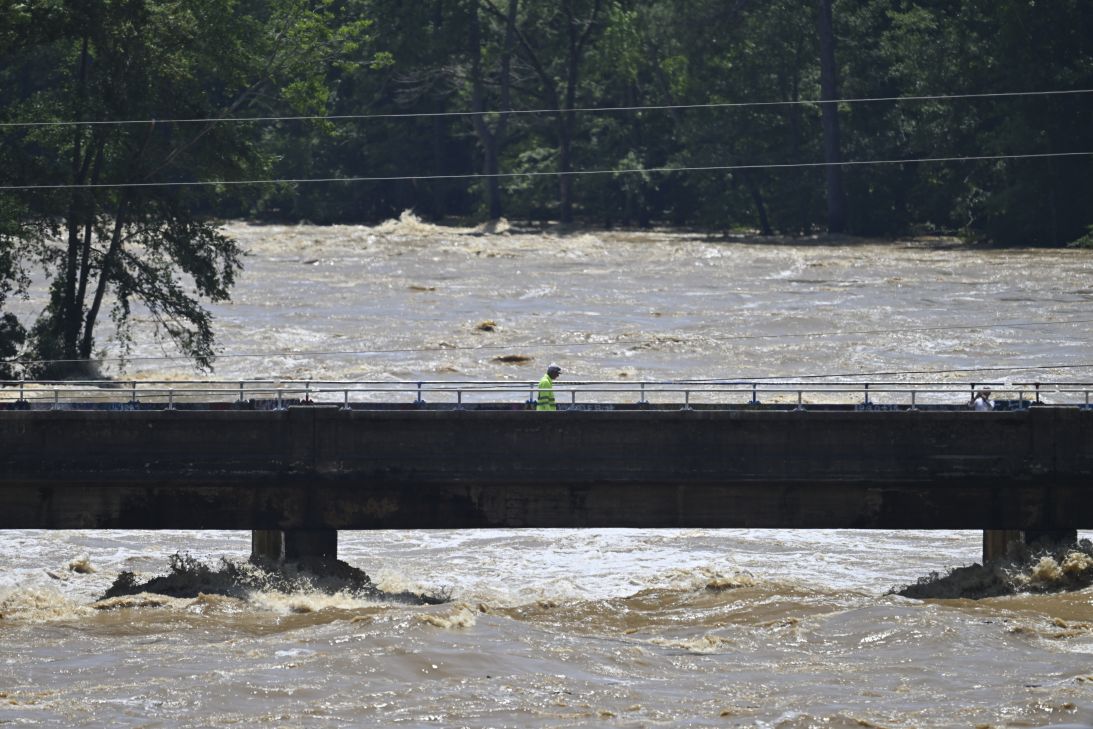Once synonymous with leisure and reprieve, summer has increasingly become a season marked by anxiety and disruption. Fossil fuel pollution — alongside other compounding factors — has transformed these months into a time of mounting peril, punctuated by relentless heat waves, rampant wildfires and catastrophic flooding.
This summer, in particular, has been defined by a tragic surge in deadly flash floods across the United States, underscoring the escalating volatility of our warming world.
It’s no accident this is the summer of flooding, climate scientists say, with 100-year to 1,000-year deluges happening nearly simultaneously in multiple states on multiple days.
Large parts of the US have seen an unusually humid summer with record amounts of moisture in the air. When cold fronts and other weather systems come along, that moisture can get wrung out, squeezed like a water-laden sponge, yielding heavy and often highly localized downpours.
For much of the summer, the atmospheric conditions over the US have funneled humid air north from the unusually warm Gulf and western Atlantic, including the Gulf Stream, UCLA climate researcher Daniel Swain told CNN. This has yielded unusually high levels of moisture at all levels of the atmosphere across the US east of the Rockies, Swain said.
It has led to record levels of what meteorologists call precipitable water, which is the amount of rain that would result from instantaneously extracting all the water in the air.
This pattern has led to one flash flood after another.

First and foremost, there was the devastating Texas flood that killed more than 130 people on the night of July 4. But flash flood events have been focused elsewhere as well. Three people were killed in a flash flood related to torrential rains falling on a wildfire burn scar in Ruidoso, New Mexico, on July 8.
Some major roads in Chicago were suddenly under water when a 1,000-year rainfall event struck in early July. In portions of North Carolina, the remnants of Tropical Storm Chantal led to deadly heavy rain and flooding the same weekend as the Texas tragedy. In New York City, water rushed into the subway tunnels when the city saw its second-heaviest rainfall total in one hour on July 14, with widespread flash flooding lasting into the 15th. And this past week, it was Kansas City’s turn to flood on July 17.
Some of these floods resulted from rainfall that has a return frequency of about 1,000 years, meaning it has just a 0.1% chance of occurring in any given year. But climate change is loading the dice in favor of extreme precipitation.
“When we talk about e.g. ‘1000 year’ events, we’re talking about the likelihood of these events in the absence of human-caused warming (i.e. how often we would expect them from natural variability alone),” said climate scientist Michael Mann of the University of Pennsylvania. “These events are of course much more frequent *because* of human-caused warming,” he said in an email.
But his research has identified other factors, such as persistent large-scale weather patterns known as “atmospheric resonance,” that can make extreme weather, including floods, even more likely. Just as sound waves or ocean waves can resonate and reinforce each other, atmospheric resonance can happen to undulating jet stream patterns in the upper atmosphere, resulting in weather systems that stay in place for weeks.
A recent study Mann worked on found such weather patterns have tripled in incidence since the mid-20th century during the summer months. The problem is these patterns are “not necessarily well-captured in climate models,” he said. This increases uncertainty about future projections for extreme weather trends.
The influence of climate change on heavy rainfall is most evident when it comes to short duration extreme events, like what has happened repeatedly this summer, according to Swain.
“It is not average precipitation that really is most affected by climate change,” Swain said. “It truly is mathematically correct that the more extreme the rain event, the clearer the connection to climate change is.”

The physics of how global warming affects heavy precipitation events is well known, according to climate scientist Kate Marvel.
“This is almost a textbook example of climate change impacts,” she told CNN. “The science behind it is so basic you can see it in daily life. Warm water drives more evaporation — the bathroom gets much steamier after a hot bath than a cold one,” she said.
“Warm air contains more water vapor — a cold beer gets wet on the outside on a hot day, because when air comes into contact with the cooler surface, it has to condense out its water vapor,” Marvel said.
“Warm ground makes it easier for moist air to balloon upwards – this is why thunderstorms happen on hot summer afternoons. Put these all together, and you get the perfect conditions for torrential rain,” said Marvel, author of the new climate book “Human Nature.”
“Whether a downpour turns into a catastrophic flood depends on a lot of things: how porous the ground is, the topography of the area, the people and things in harm’s way. But there is absolutely no doubt that climate change, caused by human emissions of greenhouse gases, is making extreme rainfall more extreme.”
